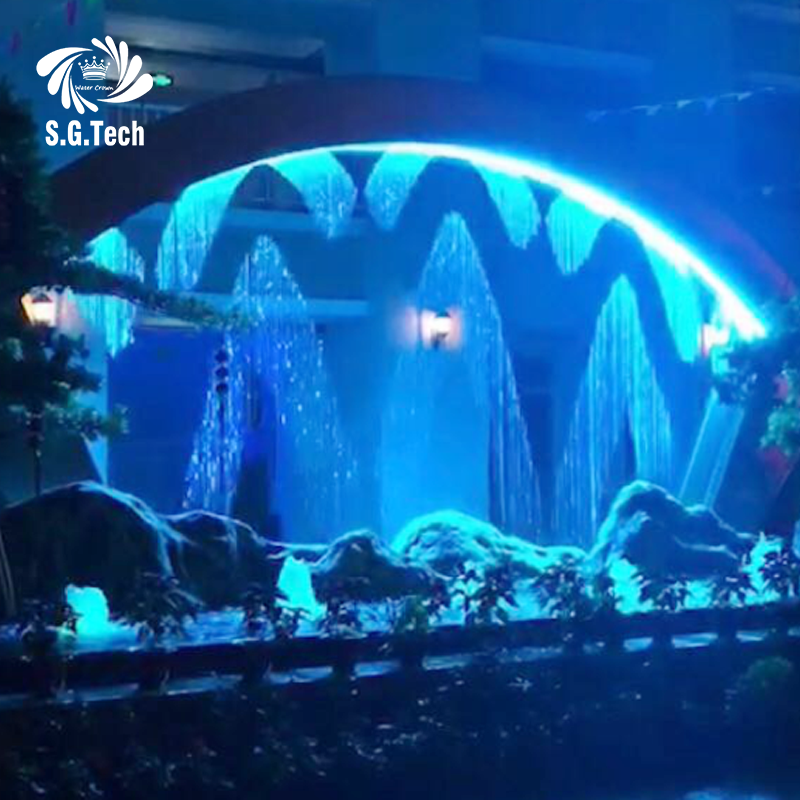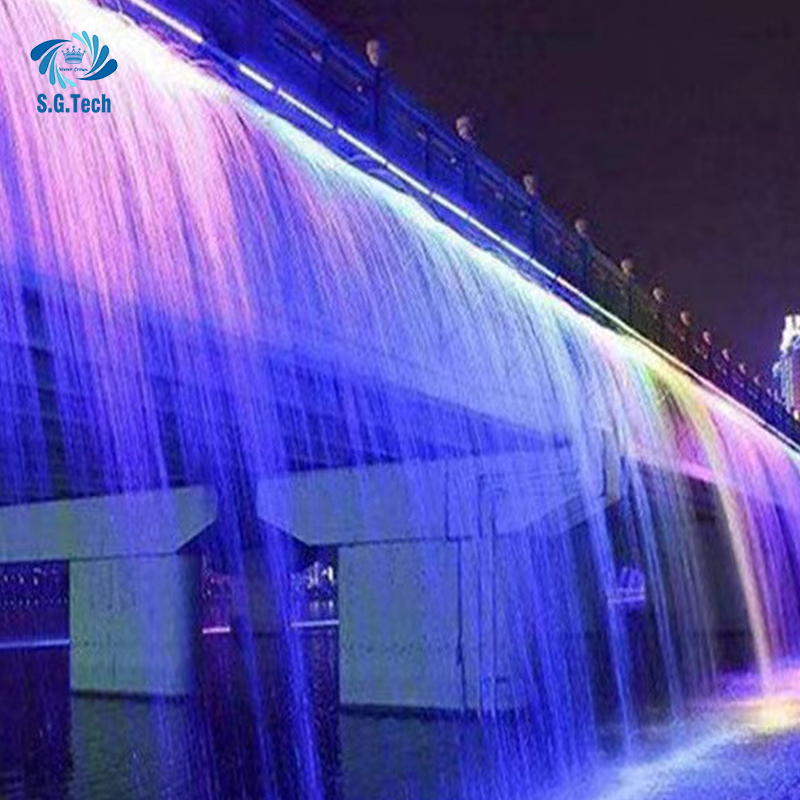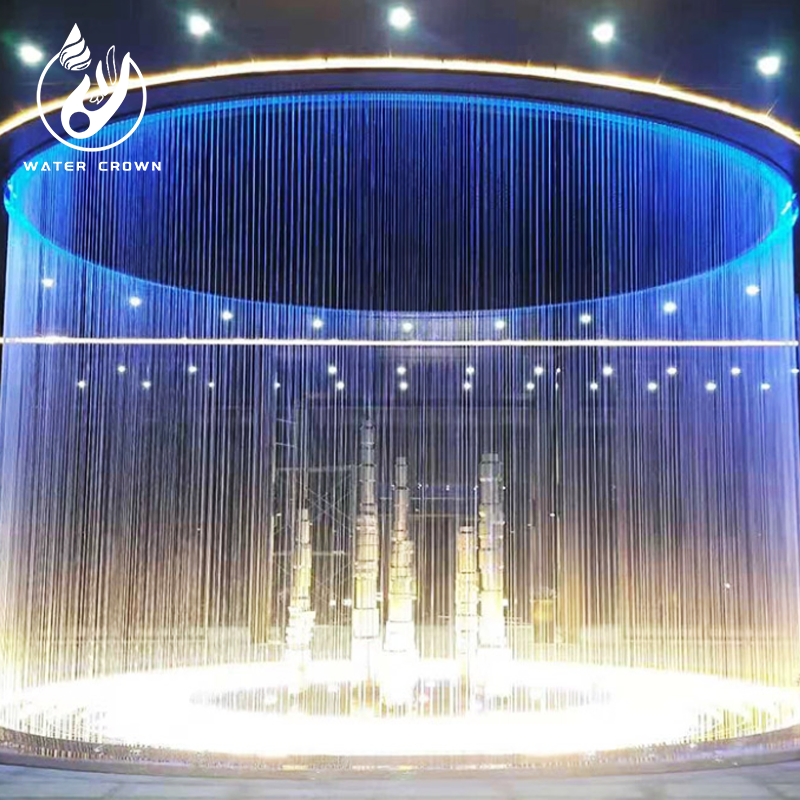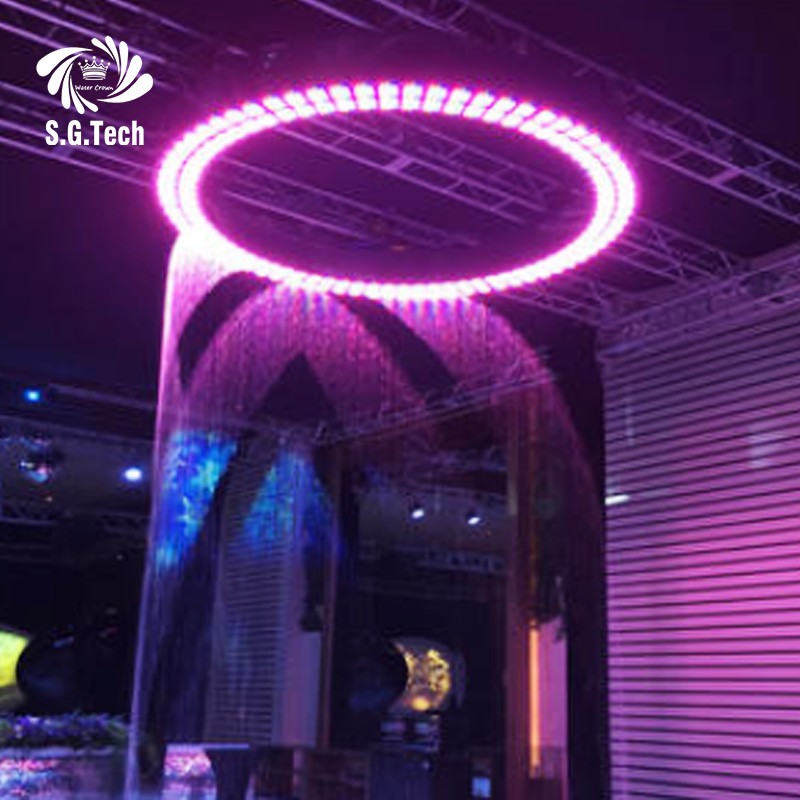
Izbor boje zavjesa fontane je značajan aspekt koji može transformirati cjelokupno vizualno iskustvo prikazivanja fontane. Boja ima moć da izaziva emocije, postavi raspoloženje i stvori jedinstvenu identitetu za zavjesu fontane. S teknološke točke gledišta, boja zavjesa fontane glavnom se postiže kroz upotrebu osvjetljenja. LED svjetla su najpopularnija opcija u savremenim instalacijama fontana. Ponudili su nekoliko prednosti, uključujući nisku potrošnju energije, dug životni vijek i mogućnost proizvodnje širokog spektra boja. Korištenjem kombinacije crvene, zelene i plave (RGB) LED dioda, može se stvoriti skoro beskonačan broj boja koje se može prilagoditi u stvarnom vremenu. Izbor boja ovisi o raznim faktorima. Za javna mjesta, kao što su gradski trgovi ili zabavni parkovi, često se preferiraju jake i živahne boje poput crvene, narančaste i žute jer mogu privući pažnju s udaljenosti i stvoriti živahnu i energičnu atmosferu. Ove boje su također vrlo vidljive, čime se zavjesa fontane postaje fokus čak i u gušćim područjima. S druge strane, za tišnije okruženja poput botaničkih vrtova ili meditacijskih prostora, lagane boje kao što su plava, zelena i ljubičasta bolje odgovaraju. Plava može izazvati osjećaj mira i tišine, podsjećajući na ocean ili nebo, dok je zelena povezana s prirodom i može stvoriti harmonijsku vezu s okolnim biljnim nasadi. Promjena boja dodaje još jedan sloj složenosti i vizualnog interesantnosti. Sekvencijalne promjene boja, gdje se zavjesa gladko prelazi s jedne boje na drugu, mogu stvoriti fascinirajuće i snovito djelo. Brze promjene boja, s druge strane, mogu se koristiti za stvaranje dinamičnijeg i uzbuđujućeg prikaza, posebno kada su sinkronizirane s glazbom ili drugim oblicima zabave. Intenzitet boja također ima značenje. Boje visoke intenzitete mogu činiti da se zavjesa fontane više ističe, ali treba ih uravnotežiti kako bi se izbjeglo da budu preopterećujuće. Također treba uzeti u obzir interakciju između boje vodene zavjese i okolne arhitekture i pejzaža. Boje trebaju dopuniti i poboljšati cjelovito okruženje umjesto da se sukobljavaju s njim. Nadalje, kulturni faktori mogu utjecati na izbor boje zavjesa fontane. U nekim kulturama, određene boje imaju specifične simboličke značenja. Na primjer, u kineskoj kulturi, crvena je povezana s dobrom srećom i srećom, pa je možda popularna izbora za praznične prikaze fontana. Shvaćanje ovih kulturnih nuansa ključno je prilikom dizajniranja zavjesa fontana za raznovrsnu publiku kako bi se osiguralo da je shema boja dobro prihvaćena i smislena.


